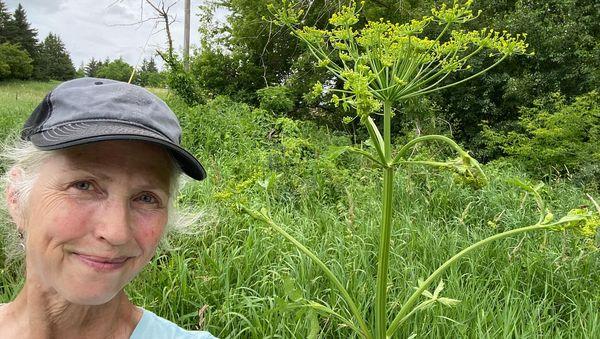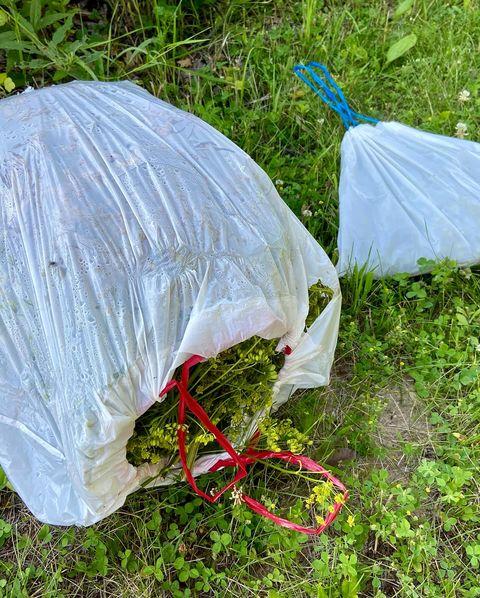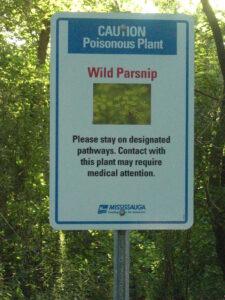Revised June 4, 2025
The MnDNR says “Invasive species are species that are not native to Minnesota and cause economic or environmental harm or harm to human health.”
Wild parsnips are one of the latest “invasives” to show up in the region.
- The MnDNR says wild parsnips have spread across Minnesota including Hennepin County.
- The leaves are toxic to human skin, causing serious burns when coming into contact. The DNR says “Avoid skin contact with the toxic sap of the plant by wearing gloves, long sleeves and long pants. When the juice of wild parsnip comes in contact with skin in the presence of sunlight it can cause a chemical burn which can look like a rash with blistering and discoloration of the skin (phytophotodermatitis)”
- Wild parsnip looks like Queen Anne’s lace with one key difference: It is yellow, not white.
- Wild parsnip is often confused for Golden Alexander, a native wildflower that produces similar-looking yellow, lacy flowers and grows to about three feet while the parsnip plant can grow to 4-5 feet.
- The invasive parsnip has been identified along the Lake Minnetonka Regional Trail in Shorewood.
Wendy Johnson is doing a prairie restoration on her Goodhue County property. She has hands-on tips for identifying and removing the nasty plant. Wendy explains her process: “I had to snip these [seed heads] off and bag them before cutting the tap root. Now I’ll let them rot in the sun. I have to cover my whole body from head to toe to protect against getting the sap on my skin that resulted in burns which took me out of commission for over a week.”


Was this post useful?
Average rating 5 / 5. Vote count: 8
No votes so far! Be the first to rate this post.












